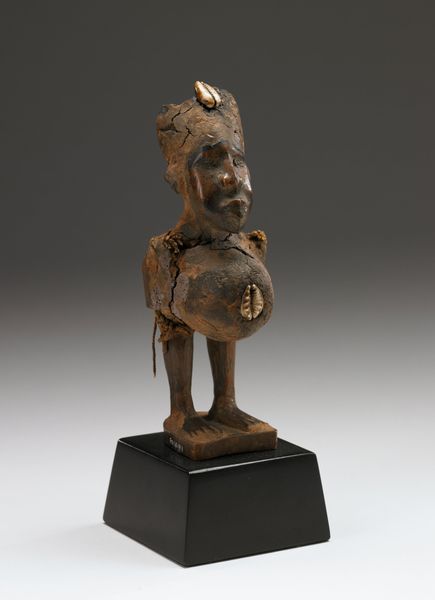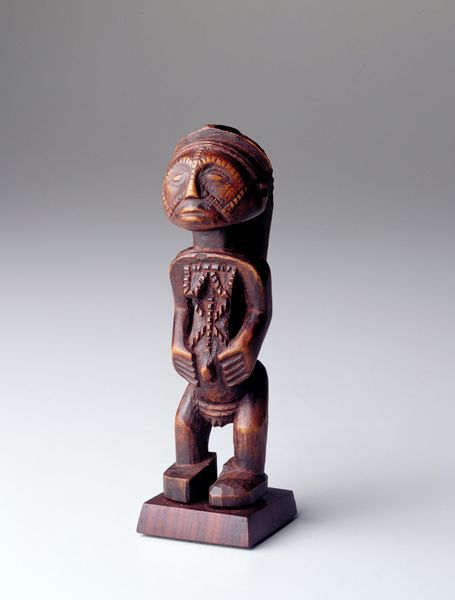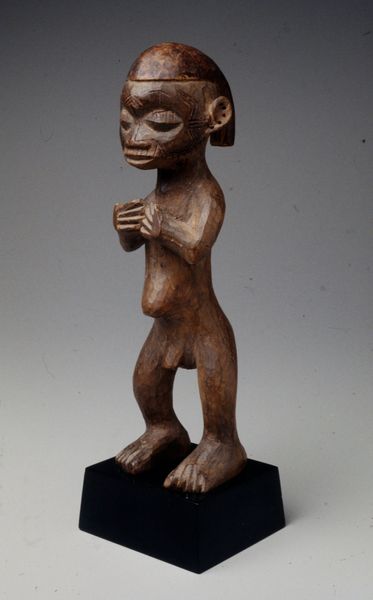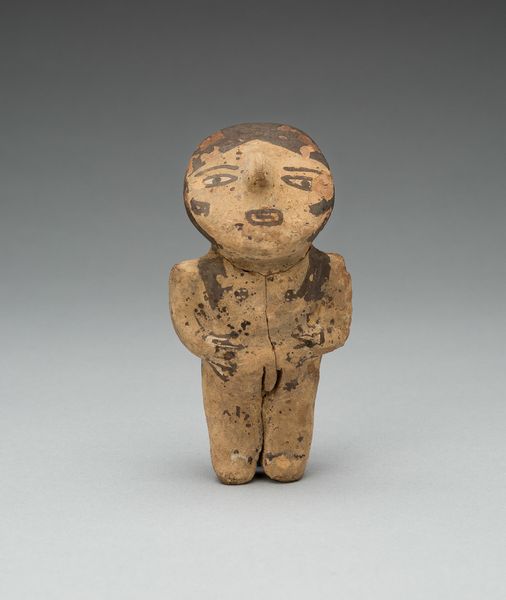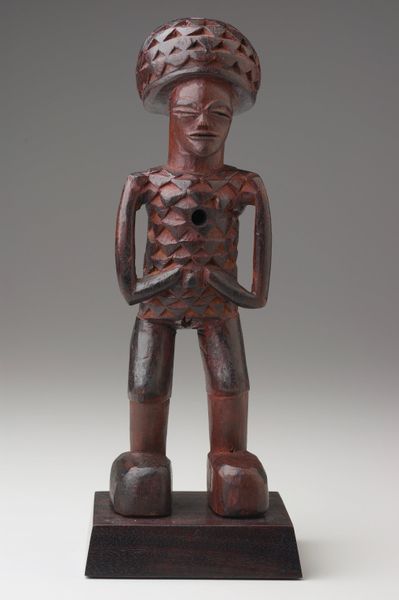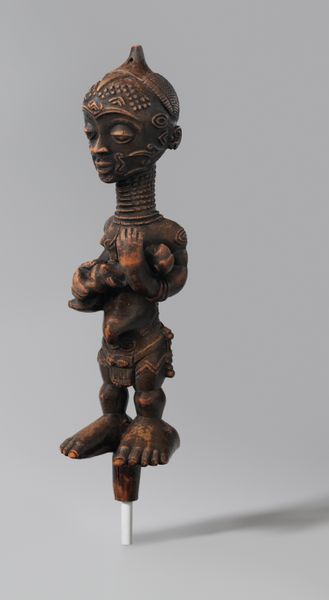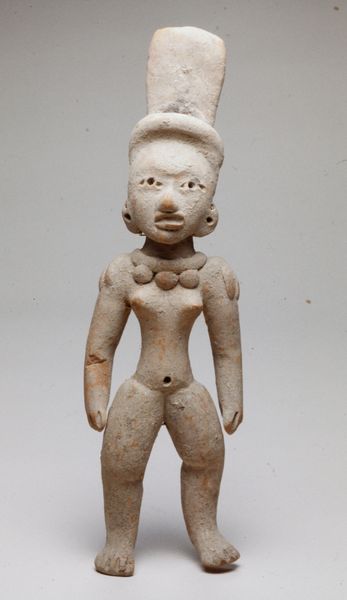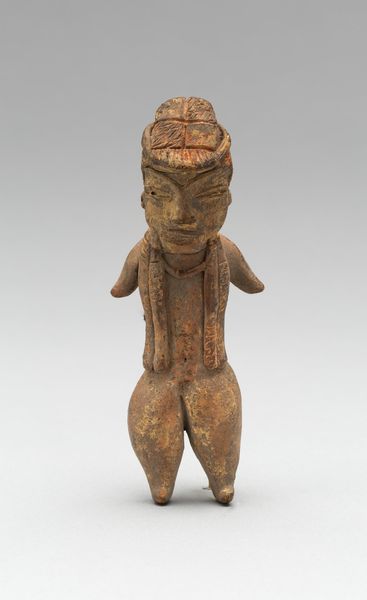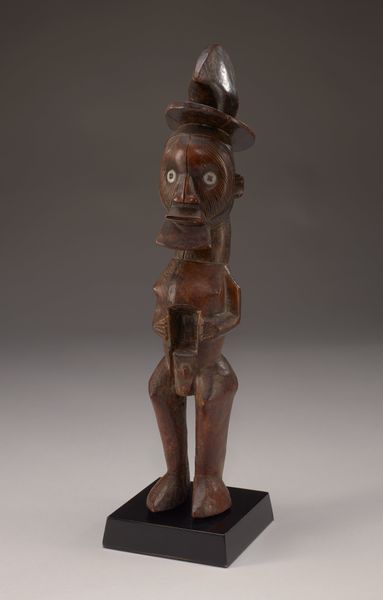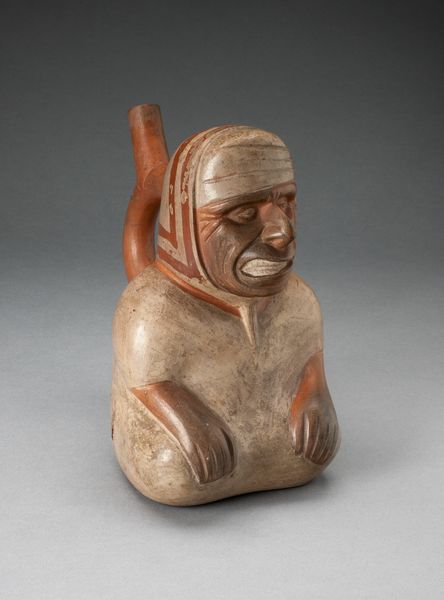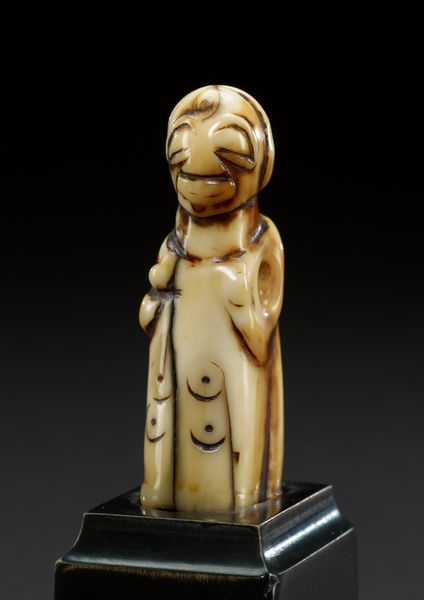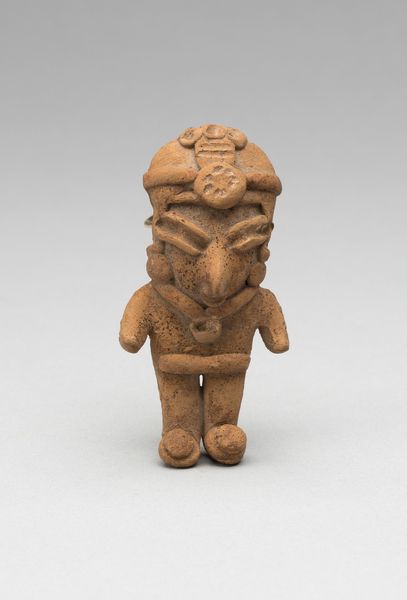
ceramic, sculpture, terracotta
#
portrait
#
ceramic
#
sculptural image
#
figuration
#
ancient-mediterranean
#
sculpture
#
terracotta
Dimensions: 8 1/2 x 3 1/8 x 2 15/16 in. (21.59 x 7.94 x 7.46 cm)
Copyright: Public Domain
Curator: Standing before us, we have "Seated Figure," a terracotta sculpture dating back to the 6th century from the Nok culture. Editor: The figure’s stillness strikes me; an almost mournful expression frozen in the clay. It looks rather compact too, a feeling emphasized by the way it's posed. Curator: The Nok culture, located in what is now Nigeria, is renowned for their sophisticated terracotta sculptures. Their work, including this particular figure, played a significant role within political and social systems of the time, used in rituals connected to power, agriculture and more. Editor: Power you say, and yet that expression seems to be in conflict with authority. Given its seated posture, are there indications of rank within this figure or society more generally perhaps reflected through stylistic elements? What would an individual’s societal position be? Curator: The figure’s adornments, like the intricate headpiece, bands across the torso and carefully defined details of the face, likely denoted status and perhaps specific roles. Furthermore, examining the composition of where such figures were found, whether residential, civic, or sacred locations, tells a deeper story of community values and authority. Editor: What strikes me most is the ambiguity, how the fixed, almost abstracted, features invite projecting meaning. It’s hard to know how such representations can be reclaimed outside of institutional spaces today when so little is actually known with certainty concerning the artist. Curator: Absolutely, such discussions are pertinent. We need to reflect upon and contextualize colonial legacies embedded within the historical narratives surrounding such cultural objects. Reclaiming the narratives while giving more attention to interpretation from African researchers and theorists for instance, is key to reshaping our understanding. Editor: It’s fascinating how a seemingly simple object can be a portal into understanding ancient societal dynamics and continued considerations about the narratives we share in our present moment. Curator: Precisely, this statue is an extraordinary point of conversation spanning past, present, and possibilities for a more thoughtful engagement with ancient traditions going forward.
Comments
No comments
Be the first to comment and join the conversation on the ultimate creative platform.
